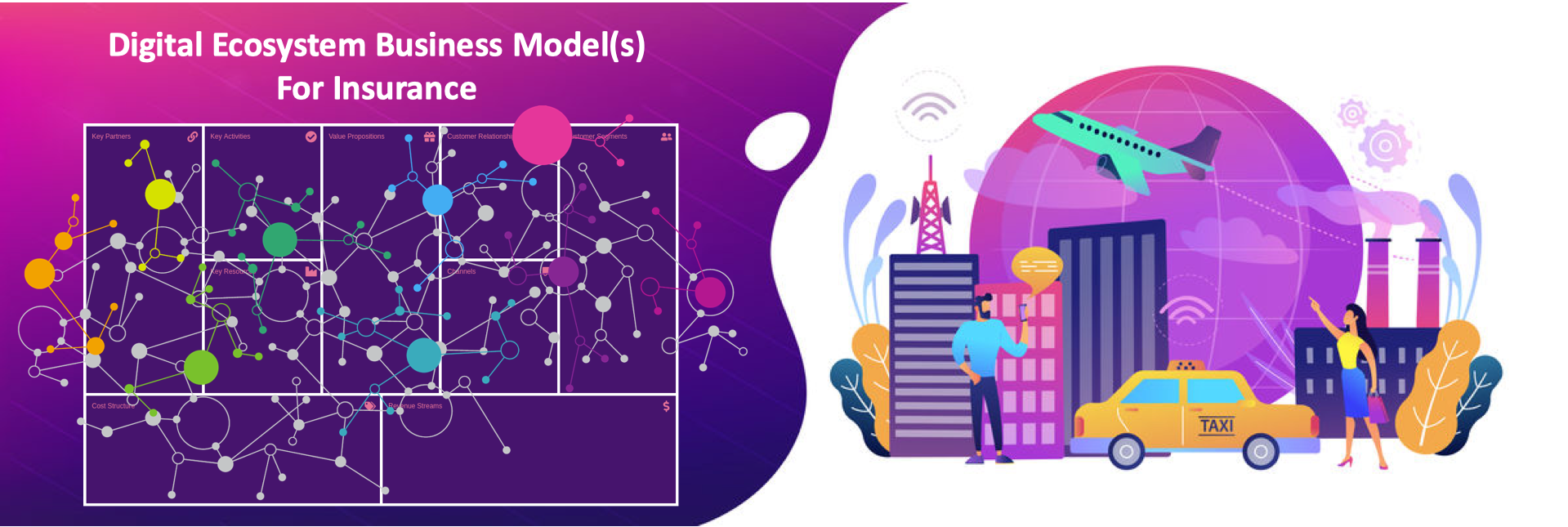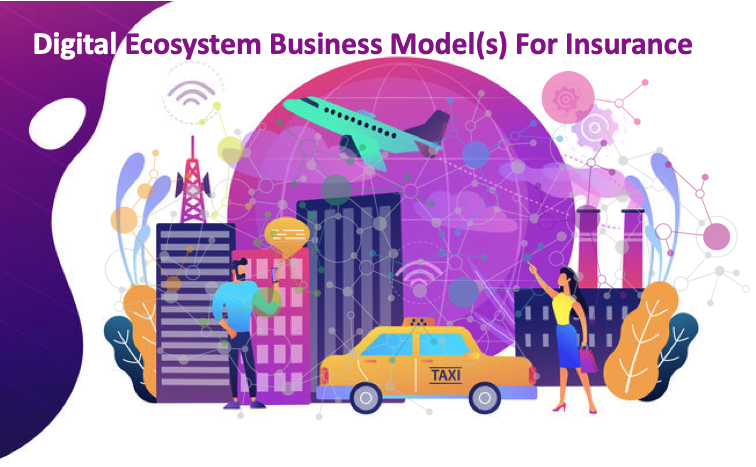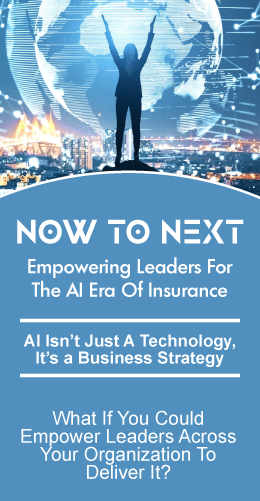
“The future is here, just not evenly distributed”. This famous quote by William Gibson is a word to the wise. It couldn’t be truer when it comes to Digital Ecosystems & Insurance. They are reshaping customer engagement, business models, and operations. In fact, they are reshaping entire industries including insurance. While skeptics downplay them, here are the questions the wise are asking to help them develop digital ecosystem strategies and business models to create powerful competitive advantages.
Digital Ecosystems Impact
McKinsey expects 12 Digital Ecosystems to deliver 30% + of the world’s revenue, $60 Trillion, by 2025, a staggering number. Industries including retail, automotive, entertainment, telecommunications, music, manufacturing, agriculture, and transportation have already seen changes. These have been driven by companies such as Amazon, Google, & Apple. In insurance, innovative players like Ping An have already built successful digital ecosystems. These all contain insights into the future digital ecosystems will bring to insurance. New multiple customer engagement points, business & partnering models, products integrated with other services, and powerful ecosystem orchestrators and platforms.
The Power Within
Digital Ecosystems are gaining momentum because of the incremental value they deliver. Huge arrays of data on insureds, environments, and digitally connected things. Behavioral and Contextual data and much more. Multiple access points and engagement models that reach customers more personally and more cost-effectively. A diversity of personalized high-value services and options for the consumer. They also provide increased visibility to and lower integration costs for potential partners.
Opportunities for Insurers.
Digital Ecosystems open the doors to game-changing innovations for every line of insurance.
For Life, Annuities, and Group Benefits, they offer engagement and connections to integrated wealth and financial management and health and wellness services for the insured and their families.
For Personal Lines P&C, they provide digital connections to home and auto that monitor and protect from common risks and provide interactive behavioral guidance that reduces risky behaviors.
For Commercial P&C and Specialty Lines, they provide similar connectivity to the buildings, equipment, and even supply chains. They also provide the same behavioral guidance and feedback for employees and management.
This Race Goes to the Swift.
Digital Ecosystems, the Innovation driving them, and their ability to reshape industries are growing dramatically. Think back to the $60 Trillion and the 2025 date cited earlier in this post. If you expect to survive as a company you have to get in this game now. Why? For starters, the partnerships that define the ecosystem and its business model are being established now. Waiting means you may not be part of the inner circle. Doing business in an ecosystem world is different. There is also a steep learning and cultural curve to work through. You have to move from a product-centric to a customer and service-centric mentality. You need to transition to an infrastructure that supports real-time data, analytics, and engagement models that drive success. And, you must adopt a partnering approach to engaging, supporting, and delivering value to the customer. The message is clear. Wait, and try to compete on the leftovers. Or, act and take the pole position.
Business Model Options and Requirements
The starting point is determining which kind of Digital Ecosystem strategy best meets your needs as a company, business line, or product offering. The likelihood is that as a company you will take a multipronged approach incorporating several different strategies.
The largest companies should consider becoming ecosystem orchestrators. Orchestrators establish and recruit platform and solution partners into an ecosystem. They make money in various ways as ecosystem participants use and transact business within the ecosystem. Platform providers build and support platforms that make it easier for others to enter, create solutions, and monetize the value they create in the ecosystem. Those can include data providers, data interoperability services, infrastructure providers, etc. Solution providers offer the products and services that are ultimately consumed by the end customer. As an orchestrator or platform provider, you can also offer products and services.
Which of these you choose to pursue will depend largely on your company culture, strategy, and resources. Is there an opportunity for you to work collaboratively with affiliates to build or support customer engagement or solution models? Can you benefit from developing or supporting infrastructure that improves yours as well as other’s operational effectiveness?
It Starts with the Customer
The journey of defining and implementing your Digital Ecosystem Strategy starts with building a deep understanding of who your customer will be, and what their future needs will be. That’s right. You have to plan, design, and invest in the future that is coming, not the current status quo.
Who are your customers? What are the trends shaping the world they live and work within? What are their emerging needs and goals? What are the core activities they will engage in? Who are likely to be the strongest competitor vying to meet their needs. What are the major trends and cultural shifts shaping the market place they and you will be a part of? What is the scope of the solution or service you want to offer them? What existing or emerging ecosystems and platforms are available that are aligned with the customer’s values and goals that you could tap into? Who plays what roles within those and are they open to partnering? Where within that is there an opportunity for you to bring incremental value? Through what ecosystem role can you deliver the greatest value, Orchestrator, Platform or Solution Provider?
Building and Stress Testing the Model
Once you have answered the questions above, you can now start to build out and stress test your business model(s)
Who is the customer? How large is the opportunity? What are your expectations for growth? What is your key value proposition? What are the key activities and resources you will need to provide to deliver it? Through which channels and touchpoints can you deliver the greatest value? What partners are key to delivering it and how will they be compensated? How will you monetize the value you create? What are the costs involved in developing, delivering, maintaining, and scaling the solution you provide? What alternatives are there for structuring how costs and revenues are shared? How will competitors respond and how will that impact your model(s).
Answering these questions will give you a great start in determining what your Digital Ecosystem Strategies and Business Model(s).
Your thoughts and input greatly appreciated.








